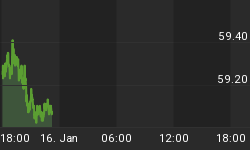Gold prices have plunged to 4-month lows after the Fed’s decision to leave interest rates unchanged cooled off rate-cut bets. Gold futures have headed sharply lower on Thursday, putting bullion on pace for the lowest settlement since December.
Gold for June delivery (GCM9) fell $13 on Comex, or 1 percent to $1,271.30 an ounce after touching an intraday low at $1,267.30. Even at the current slightly improved level, the contract is still the cheapest among active contracts since Dec. 21 according to FactSet data.
Meanwhile, silver has not fared much better with July silver contracts (SIN9) falling 0.81percent to $14.64 an ounce.

(Click to enlarge)
Source: Investing.com
According to analysts at Zaner Metals, the selloff is a clear sign that most punters were expecting the Fed to lower rates and confirm the weak economy thesis.
Unfortunately, the central bank’s commentary actually leaned in the opposite direction after it left rates unchanged at 2.25-2.50 percent citing a strong economy and lack of inflationary pressure. Last week, the U.S.Commerce Department said that the economy had expanded 3.2 percent during the first quarter, exceeding virtually all prior estimates.
But what was particularly perturbing for precious metals traders is that the Fed gave no indication that it might lower rates any time soon despite prevailing low inflation rates. Fresh data coming on Monday has shown that core inflation-- as measured by personal consumption expenditure and excluding food and energy prices-- was tracking below the central bank’s target rate of 2 percent at 1.6 percent—a 19-month low. That’s surprisingly low considering how long the economy has remained on a growth path.
Related: U.S. Slaps New Sanctions On Cuba
Precious metals such as gold and silver tend to benefit when inflationary pressure is high because they are regarded as good inflation hedges.
Meanwhile, high-interest rates tend to hurt them because they make interest-yielding investments such as Treasuries and bonds more attractive.
Perhaps the only positive takeaway for gold punters is that a cross-section of analysts still expects the Fed to indulge their wish by cutting rates at least once before year-end if the current low-inflation environment persists.
Strong dollar
A stubbornly dovish Fed, however, is just one of the wall of worries the precious metal market will have to climb. The other big one is a strong dollar, with strong economic data likely to keep the currency buoyant. A strong buck can depress prices of dollar-denominated commodities like gold and silver quite dramatically.
Unfortunately for gold bulls, that’s precisely what’s beginning to happen.
The U.S. dollar has bounced off its 2-week low after the Federal Reserve moved to keep interest rates unchanged. The ICE Dollar Index, a metric that measures the strength of the dollar against a basket of six major currencies, turned significantly higher on Wednesday and Thursday trading sessions.

(Click to enlarge)
Source: Investing.com
Analysts have found it perplexing that the dollar has continued to strengthen even after the Fed slammed the brakes on its rate hikes in January. That’s the case because the U.S. economy still remains much stronger relative to its trading partners as we explained here.
Maybe a full recession and a return to the Fed’s QE program is what it will eventually take to weaken the currency and give precious metals a much-needed breather.
Central banks driving gold demand

(Click to enlarge)
Source: MarketWatch
It’s not all doom and gloom though for gold traders.
According to data from the World Gold Council, global demand for gold climbed 7 percent year-on-year in the first quarter . The WGC says the increase was largely driven by continued buying by central banks across the globe as well as healthy demand by gold-backed exchange-traded funds(ETFs). Central banks purchased 145.5 tons of the precious metal during the first quarter of the year, a massive 68 percent increase compared to year-ago levels and the strongest start to a year in five years. Meanwhile, ETFs and other similar investment instruments gobbled up another 40.3 tons, a 49 percent Y/Y climb.
Central banks in EMs such as China and Russia have emerged as major buyers of the yellow metal as they look to wean their economies off overdependence on the dollar.
By Alex Kimani for SafeHaven.com
More Top Reads From Safehaven.com

















